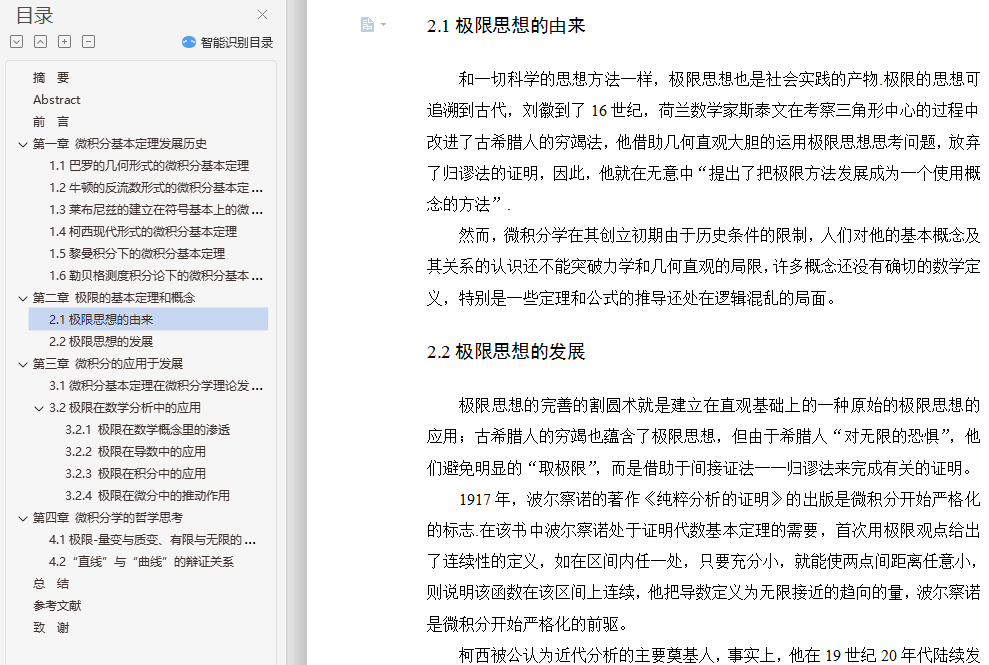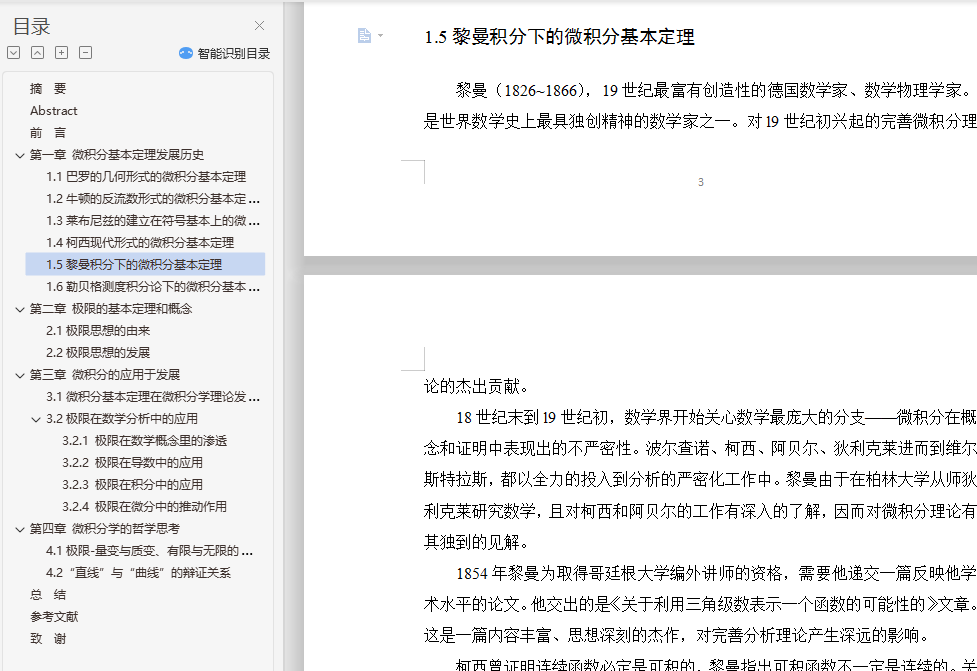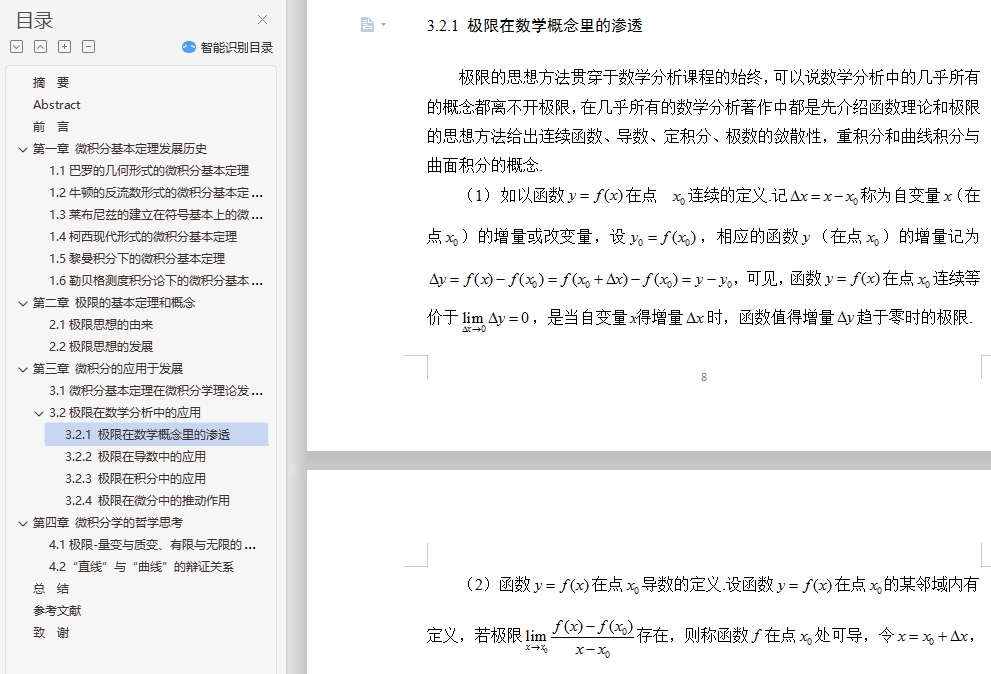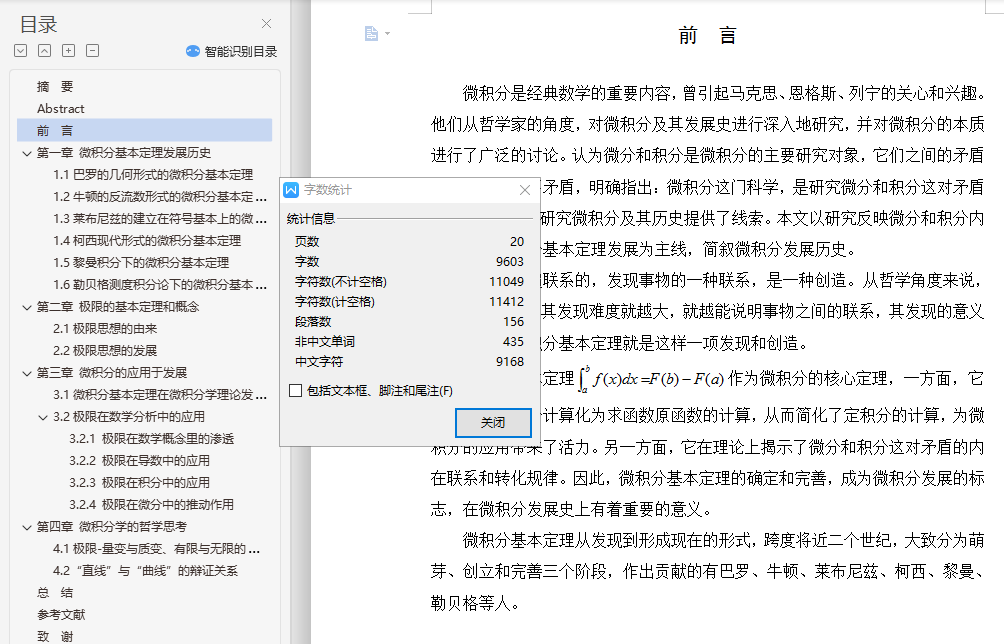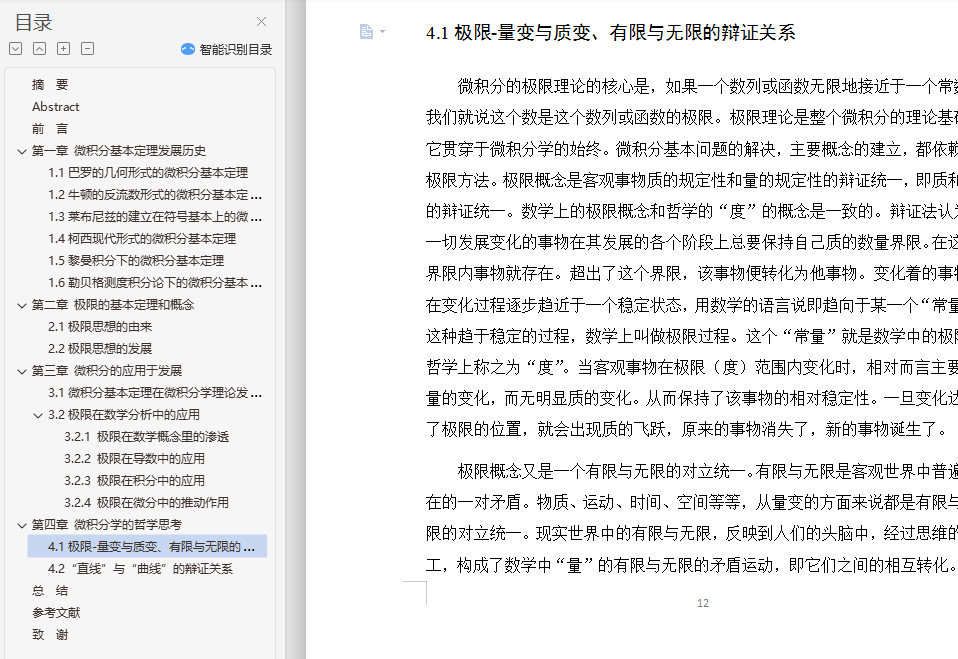摘 要
微积分基本定理(又称牛顿—莱布尼兹公式)是微积分中最重要的定理,它是由英国数学家牛顿(1642-1727)和德国数学家莱布尼兹(1646-1716)在十七世纪首先发现的,被命名为牛顿—莱布尼兹公式。它的出现标志着微积分的完成,成为数学发展史上的一个里程碑。导数,微分,不定积分与定积分是微积分学中最重要的概念,其中微分与不定积分都是由导数定义的,三者之间的关系是明显的,但是定积分同这三个概念的联系却不能从定义中看出,正是微积分基本定理从理论上揭示了定积分与微分间的互递关系,使微积分的四个重要概念得到完全沟通。
本文通过对微积分的基本定理思想的解析,极限的基本定理和概念概述,然后对微积分的应用与发展结合案例分析,最后对微积分的思想哲学做一个深入剖析。
关键词:微积分;定理;极限;应用;哲学
Abstract
The fundamental theorem of calculus (also known as Newton-Leibniz formula) is the most important theorem in calculus. It was first discovered by British mathematician Newton (1642/1727) and German mathematician Leibniz (1646/1716) in the seventeenth century. It was named Newton-Leibniz formula. Its appearance marks the completion of calculus and becomes a milestone in the history of mathematical development. Derivative, differential, indefinite integral and definite integral are the most important concepts in calculus,in which differential and indefinite integral are defined by derivative. The relation among them is obvious, but the relation between definite integral and these three concepts is obvious. However, it can not be seen from the definition that it is the fundamental theorem of calculus that theoretically reveals the relationship between the definite integral and the differential,so that the four important concepts of calculus can be completely communicated.
This paper,through the analysis of the basic theorem of the calculus, the basic theorem and the concept of the limit,then analyses the application and development of the calculus,and finally makes an in-depth analysis of the philosophy of the calculus.
Key words: calculus;Theorem;limit;Application;philosophy
目 录
摘 要 I
Abstract II
前 言 1
第一章 微积分基本定理发展历史 2
1.1巴罗的几何形式的微积分基本定理 2
1.2牛顿的反流数形式的微积分基本定理 2
1.3莱布尼兹的建立在符号基本上的微积分基本定理 3
1.4柯西现代形式的微积分基本定理 3
1.5黎曼积分下的微积分基本定理 3
1.6勒贝格测度积分论下的微积分基本定理 4
第二章 极限的基本定理和概念 5
2.1极限思想的由来 5
2.2极限思想的发展 5
第三章 微积分的应用于发展 7
3.1微积分基本定理在微积分学理论发展中的应用 7
3.2极限在数学分析中的应用 8
3.2.1 极限在数学概念里的渗透 8
3.2.2 极限在导数中的应用 9
3.2.3 极限在积分中的应用 10
3.2.4 极限在微分中的推动作用 11
第四章 微积分学的哲学思考 12
4.1极限-量变与质变、有限与无限的辩证关系 12
4.2“直线”与“曲线”的辩证关系 13
总 结 15
参考文献 16
致 谢 17
